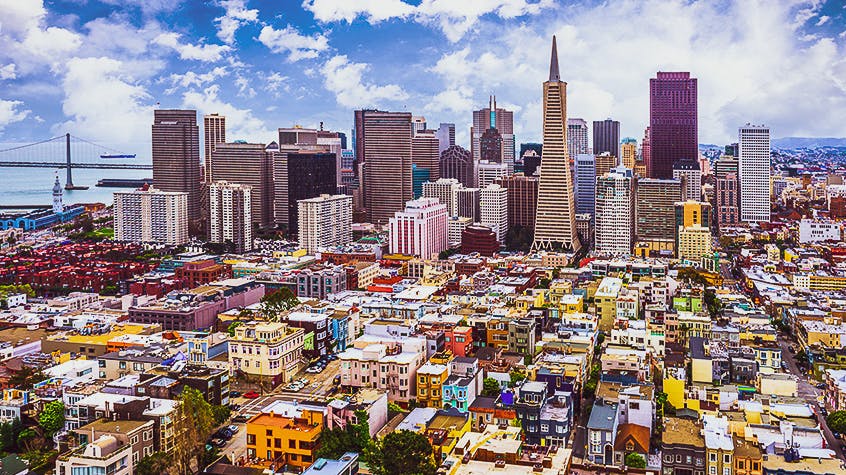






Please add profiles of those who were born, lived or died in Fullerton, California.
History
Fullerton was founded in 1887 and was named for George H. Fullerton, president of the Pacific Land and Improvement Company.
Drilling for petroleum began in 1880 with the discovery of the Brea-Olinda Oil Field and fueled the first real boom, peaking in the 1920s. Construction reflected the vogue for Spanish Colonial and Italian Renaissance-inspired architecture, as in the historic Fox Fullerton Theatre (erected 1925); the home of Walter and Adella Muckenthaler, designed by Frank K. Benchley (erected 1924); and the city's chief landmark, the Plummer Auditorium and clock tower (erected 1930). Fullerton College was established at its present location at Chapman Avenue and Lemon Street in 1913. Meanwhile, the city banned all overnight street parking in 1924— a law enforced to the present day, unless an area is specifically exempted.
The period from 1910-1950 represented a golden age for the city which like other Southern California cities were marked with elegant architecture ranging from the Beaux Arts Movement to the distinctive California Mediterranean architecture, which in turn were surrounded by bucolic farms and parks. Significant public works projects were constructed during this period, including the conversion of a southwestern sewer farm into Fullerton Municipal Airport at the behest of Placentia ranchers and aviators William and Robert Dowling in 1927. Following the depression, concentration of industry, a depressed farming economy, and cheap land development shattered the earlier period quality of life. Through the mid-1900s the economy shifted toward food processing rather than food production, as well as manufacturing; southeastern Fullerton became an industrial center. Val Vita Food Products (later Hunt Wesson and today part of ConAgra Foods, Inc.) began operating a citrus juice plant in western Fullerton in 1932. By 1941 it had become the largest food processing company in the US. In 1934 A.W. Leo, Tom Yates and Ralph Harrison developed the first Hawaiian Punch recipe in a converted garage in Fullerton. The city also became a producer of aerospace equipment, electrical and electronic components, navigation systems, and laboratory instruments.
In 1949 Dick Riedel and Bill Barris piloted the Sunkist Lady, a modified Aeronca Sedan, out of the Fullerton airport to set an endurance flight record of 1,008 hours and 2 minutes.
Also in 1949, Fullerton was the setting in which Leo Fender developed and refined the design of the Fender Telecaster, a guitar which would later be used among some of the greatest musicians of the 20th and 21st Century. Among them were Bruce Springsteen, Keith Richards, Joe Strummer, Waylon Jennings, Dwight Yoakam, Greg Camp, Jimmy Page, Kurt Cobain, James Burton, Jonny Greenwood and many others.
Although Fullerton, like other Southern California cities, had experienced an expansion of population due to housing development, this increased by an order of magnitude during the post war years. Fullerton's population soared after World War II as American veterans migrated to California, bought housing in the land development which destroyed the surrounding farming and park areas, and in particular after the construction of Interstate 5 and development in neighboring Anaheim.
To serve the growing population, the California State Legislature authorized Orange County State College in 1957, which began operating out of Fullerton high schools in 1959. In 1963, it moved to its present campus on State College Boulevard, and later, after several name-changes, was finally redesignated California State University, Fullerton. Other institutions followed, earning Fullerton a reputation as an "Education City." The Fullerton Arboretum, a 26-acre botanical garden, opened in the northeastern part of the city adjacent the campus in 1979.
Manufacturing growth leveled off as ever-soaring property prices, increasing environmental regulation, traffic, and other pressures increased. By the late 20th century the city had lost much of its rural character in favor of suburban housing tracts and shopping centers.
The first years of the 21st century have seen several political issues played out against a backdrop of class division (between the more affluent northern and western parts of the city and the southern portion of the city, which borders Anaheim), rapidly diminishing supplies of undeveloped land, and demographic changes (including the influx of Asian and Latino immigrants into an area previously dominated by whites).
During this same period, the downtown area (a.k.a. DTF), especially south of Commonwealth Avenue (a.k.a. SOCO), has become more of a busy entertainment district, described by the OC Weekly as "Bourbon Street West." In less than five years, some 30 businesses that sell alcohol have opened, making the downtown area much more active at night. Ranging from a mixture of Mexican cantinas and Asian bars to Jazz, local venues and music stores, with the festive atmosphere have come problems such as public drunkenness, fights and a shortage of parking.
The 293-acre Hughes Aircraft Company's Ground Systems Group campus in western Fullerton was redeveloped into a major new residential and commercial district, called Amerige Heights, in 2001–2004. This development was accompanied by extreme shifts in neighborhood property values, first dropping precipitously in the late 1980s to early 1990s as the former Hughes employees sold their houses, and then rising rapidly as part of a general increase in real estate values throughout Orange County.
Links
